The dark side of mummering: What you may not know about a beloved tradition
"Any mummers 'lowed in?"
For most Newfoundlanders and Labradorians, that's a friendly question. Maybe you've heard it from holiday visitors wearing disguises. If not, you probably know it from the popular Simani Christmas song. But what if the question provoked terror instead of holiday cheer?
"I mean, it's a home invasion right?" says Shane Mills, one of the members of Grind Mind Productions, a St. John's collective that releases one short horror film monthly.
"People visiting your house in masks. That's like Hollywood stuff."
The grimmer implications of a group of masked people showing up at your home, in the dark, inspired Grind Mind's recent The Mummering.
Mummering's dark side is not new. The holiday tradition's history is one of festive celebration — but also of suspicion, crimes carried out under the cover of winter darkness, and even murder.
The history of mummering
Nobody is quite sure when mummering — called mumming or janneying in some areas — began in Newfoundland and Labrador.
There is documentation of the practice dating back to the early 1800s, though, says Larry Dohey, director of programming and public engagement at The Rooms in St. John's.
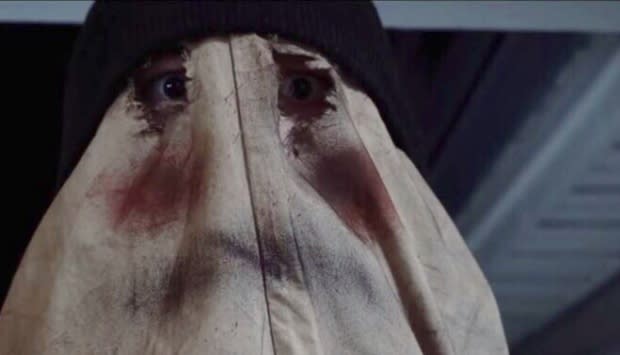
"It's just like many of the customs that we had," Dohey said, explaining the tradition was brought by British and Irish settlers and then morphed and became part of the community over time.
Mummering traditionally runs from the Feast of St. Stephen on Dec. 26 to the Old Twelfth Day on Jan. 6. In the best-known variation of the tradition, people hide their identities by disguising their faces and bodies and modify their speech and behaviour while visiting neighbours' homes.
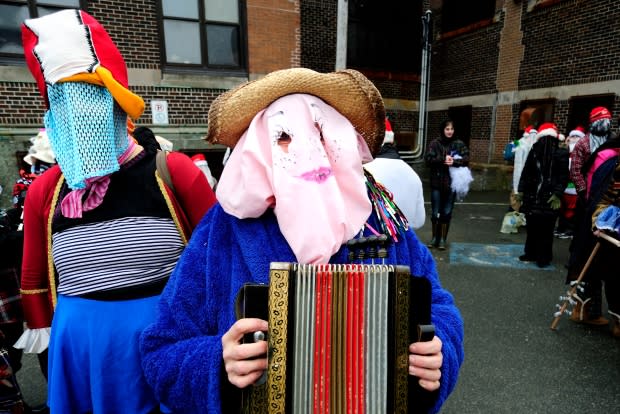
Part of the fun was guessing who was under the outlandish costumes, but for some, disguises were a way to conceal their true identities while they did things that were illegal, even violent.
"There was always some evidence of skullduggery as part of the mummering tradition," Dohey said.
"It would have been very much part of the reality of mummering because once people were in disguise, they often took advantage of that disguise just to resolve grievances, real or imagined."
Historical records describe mummers carrying hatchets, sticks, whips and other weapons. According to court records, mummers used bludgeons to rub blubber on people's faces, carried bladders filled with rocks or charged at people with a hobby horse.
Folklorist Joy Fraser has found Harbour Grace and St. John's records involving mummers accused of committing assault and battery.
There was always some evidence of skullduggery as part of the mummering tradition. - Larry Dohey
"The earliest case that we have so far is from 1830 and then it seems to have been kind of an escalation in the violence and the severity and the frequency of these incidents," said Fraser.
The harassment and violence for which mummering was occasionally used as a cover could be related to personal grudges, family disputes or religious or class conflicts, Dohey said.
A mummering murder
On December 28, 1860, mummering took a decidely darker turn.
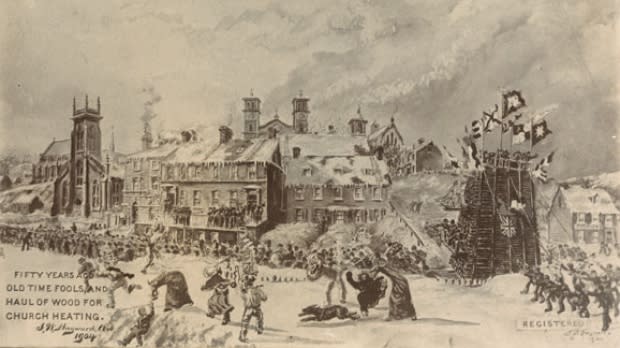
Isaac Mercer of Bay Roberts was walking home at night with his two brothers-in-law when a crowd of masked mummers beat the men. Mercer died the next day.
"This was the first case, as far as we know the only case, of a fatal assault that took place involving Christmas mummers in Newfoundland," Fraser said.
In 1861, the Newfoundland government responded by requiring a license to go mummering, at the risk of a fine or even a short imprisonment.
But mummering was ingrained in local culture by that point, and not many people were eager to get a license — something that Dohey said was difficult to enforce.
According to one St. John's newspaper, the Public Ledger, only 150 licenses were issued in the 1861-62 holiday season. The real number of mummers that year, and in years to follow, was likely much higher.
"There was still a bit of rowdiness surrounding the custom, even with the licenses," Fraser said.
"So the following year, 1862, the legislature actually passed a new amendment to that act that imposed an outright ban on the custom."
Though shocking, cases like the Mercer murder were rare.
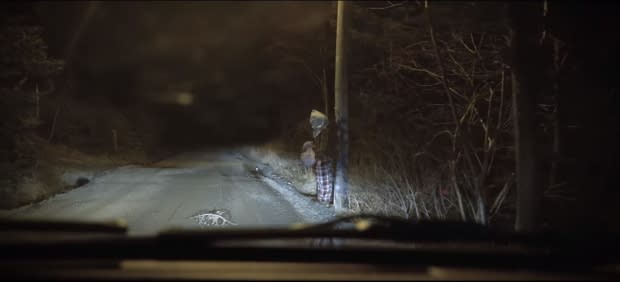
"It would have been a very small percentage of people who would have been taking advantage of the disguise for nefarious purposes," Dohey said.
"Most people would have been out and about and having a grand time."
But mummering evoked general ill ease even if the Mercer murder was an aberration, Fraser said.
"Mercer, actually, the reason why he had asked his brothers-in-law to accompany him as he was walking home that night, it was because he was afraid of the mummers, he said, because he had received some cuts from their whips the previous Christmas," she said.
"So they had that reputation."
The mummer returns
Thanks in part to the 1862 ban, the mummering tradition slowly faded over the decades, though it did remain an active practice in some parts of the province like the Southern Shore, Dohey said. By 1912, the St. John's publication Christmas Bells was already lamenting the decline of "that exciting scene when mummers paraded … from one end of Water Street to the other."
Recently, however, mummering has found its way back into the province's public consciousness through the Simani song and video and the Mummers Festival in St. John's.
Today, cute mummer ornaments and figurines are sold at stores across the province. That's the image the Grind Mind team largely knew when they began contemplating a film about mummering.
"When you're growing up it just seems like a harmless tradition," Mills said.
"But we weren't really aware of just how much of a darker history there was until we wanted to do a little background research on how we could turn this into a horror movie."
When you're growing up it just seems like a harmless tradition. - Shane Mills
The response to the video, which has 26,000 views on Facebook, showed that people are interested both in mummering and in new takes on the tradition. Grind Mind plans to follow up on its original short film in 2019 with a sequel, Mills said.
Former Newfoundland resident Bhaveek Makan was also inspired by the darker elements of mummering, returning to the province to shoot a short film about mummers with nefarious intentions called Lovely Mummers.
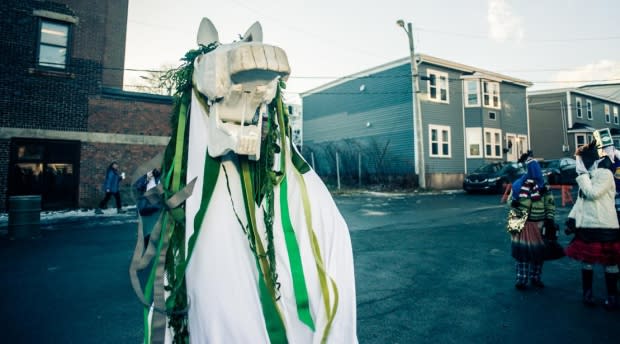
These darker, and even tragic, sides of the province's traditions and folklore are worth exploring, Dohey said.
Even the darker side of our past, he said, "shouldn't be forgotten. We should be celebrating this, and we should be certainly remembering it."
Read more articles from CBC Newfoundland and Labrador

